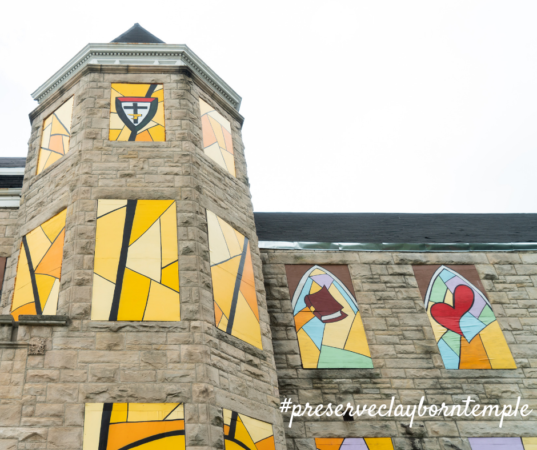Memphis is transforming. The city with a rich history spanning music, civil rights and so much more is also home to a group of young leaders who are determined to move the city forward through the cultivation of a tech community.
A major landmark in that change is Clayborn Temple, a historic site with plans to expand the footprint of the location.
Clayborn Temple started as a white congregation in 1892 as Second Presbyterian before being sold to an African-American congregation in 1949, where it was given its current name in honor of a local African Methodist Episcopal (AME) bishop. It saw many years of activity, including playing an important role in the civil rights movement. During the Sanitation Workers’ Strike in 1968, the famous “I Am a Man” signs were distributed at the church – the same signs that many now see as a classic symbol of the fight for racial equality in American History – and encouraged by Union Organizer T.O. Jones lead to a historic vote which ended the strike.

But years later, in 1999, Clayborn Temple closed. Despite its period of inactivity, it has since reopened and is being restored. What was once a home to community, activism, and worship is now open for a whole new community. The spirit of the location pulses throughout, but a new generation is rebuilding its legacy.
Clayborn Temple is a living example of the juxtaposition of what’s happening in Memphis, moving a city full of history forward to one of the most innovative tech hubs in the South. The historically important landmark is located within one of the poorest neighborhoods and lies just across from one the richest areas of Memphis. With this in mind, one of the goals of those involved with the revitalizing of Clayborn Temple is to restore the neighborhood as a whole and encourage African American wealth and entrepreneurship in the space.
The goal of entrepreneurship aligns with the wider vision to use tech towards the fight for social justice – a viewpoint that’s reminiscent of the history of the building and the community. In an effort to drive tech a movement has arisen encouraging millennials to move to Memphis and cultivate the burgeoning tech community, and Clayborn Temple is poised to be a key space in that movement. This civil rights historic site has plans to expand the footprint of the location with the help of black-owned startups to best help execute that vision.
But tech isn’t the only thing Clayborn Temple is hoping to explore. It continues to prioritize creativity and music, as it has done historically as a congregation. Earlier this year they presented preview performances of “Union: A Musical,” which brought community members, activists, artists, civic leaders and more together to discuss the state of democracy in Memphis and America as a whole.
Clayborn Temple has partnered with groups such as Consortium MMT, a 501(c)(3) non-profit that’s working to develop a viable music industry in Memphis. Through music education and entrepreneurship, the two hope to empower their participants to stay in Memphis and recreate the music hub that once thrived, while blending tech towards an inspiring future.
These initiatives have already driven a wave of important recognition for Clayborn Temple’s movement. They recently were selected as a finalist in National Geographic’s Partners in Preservation: Main Streets campaign – a campaign to engage the public in preserving historic sites by highlighting how they play an important role in local communities.
On Sunday, Oct. 21, Clayborn Temple hosted an open house where attendees met the team, heard their vision and saw how they can be involved in this history in the making. You can vote for Clayborn Temple to win $2 million in the campaign daily through Oct. 26 here.
Clayborn Temple and The Consortium MMT will also be onsite at AfroTech this year in an effort to find partners for their cause. If you’re interested in making history and starting the new tech hub of the South, make sure to stop by!


